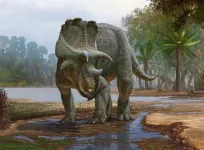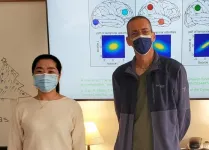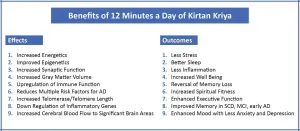(Press-News.org) DURHAM, N.C. -- With mosquito season upon us, people are stocking up on repellents to prevent itchy bites. Bug repellents are important because they don't just protect against the buzzing, blood-sucking little pests -- they also safeguard against the diseases they carry, which kill some 700,000 people worldwide each year.
Surprisingly, despite widespread use, no one understood exactly how most mosquito repellents keep the insects away. Now researchers are starting to uncover the first pieces of the puzzle.
A new study has identified a scent receptor in mosquitoes that helps them sniff out and avoid trace amounts of pyrethrum, a plant extract used for centuries to repel biting insects.
One of the oldest insecticides known, pyrethrum comes from the dried, crushed flowers of certain chrysanthemum species. Pyrethrum breaks down quickly in sunlight and isn't readily absorbed through the skin, so the insecticide has long been considered one of the safer options for use around children and pets.
What makes pyrethrum toxic to mosquitoes has been known for some time. It works by binding to tiny pores in the insects' nerve cells and paralyzing them on contact. But it has another property whose mode of action is more of a mystery. At lower concentrations it protects not by killing mosquitoes but by preventing them from getting close enough to land and bite in the first place.
Led by biology professor Ke Dong, who recently joined the faculty at Duke University, the team did a variety of tests to understand how mosquitoes detect and avoid pyrethrum, and which of the extract's chemical components help them do it.
First, they had people don a special rubber glove and put their hand in a cage holding 50 hungry mosquitoes. The glove had a window screen on the back made of two layers of loose-fitting mesh. The top layer acts as a barrier that mosquitoes are unable to bite through. Normally, mosquitoes find the heat and aroma of human skin wafting through the mesh irresistible, and are quick to land and check it out. But when the bottom layer of mesh closest to the skin was treated with pyrethrum, they lost interest.
These early experiments confirmed that mosquitoes don't have to get close enough to taste or touch pyrethrum-treated skin or clothing to stay away. To find out if smell was involved, the researchers attached tiny wire electrodes to the small hairs covering the mosquitoes' antennae and measured their electrical responses to puffs of air containing chemicals released by pyrethrum and other repellents.
A mosquito's ability to smell comes from special receptors embedded in nerve cells on the insect's antennae and mouth parts. Once odor molecules wafting through the air stimulate these receptors, the nerve cells send a message to the brain, which identifies the smell.
Dong and her colleagues were able to pinpoint a specific ingredient in pyrethrum flower extracts, called EBF, which activates a smell receptor in the mosquito's antenna called Or31.
They found that EBF works together with other components called pyrethrins to make an especially off-putting bouquet. Even tiny doses that mosquitoes barely seem to notice when the compounds occur alone -- fewer than five odor molecules per million molecules of air -- can send the insects flying or crawling away when they occur in combination.
While the researchers focused on the mosquito species Aedes aegypti -- which spreads viruses such as Zika, yellow fever and dengue -- they also found Or31 odor receptors with strikingly similar protein sequences in six other mosquito species.
More than 200 types of mosquitoes live in the United States alone; about a dozen of which spread germs that can make people sick.
With mosquitoes becoming increasingly resistant to our best chemical defenses, researchers are constantly on the lookout for new ways to fight them.
These findings, published May 5 in the journal Nature Communications, could help researchers develop new broad-spectrum repellents to keep a variety of mosquitoes at bay, and by extension stop them from biting people and spreading disease.
INFORMATION:
Ke Dong's research program is supported by the U.S. National Institutes of Health (GM115475). The Board of Trustees of Michigan State University have filed a patent for the discovery.
CITATION: "A Dual-Target Molecular Mechanism of Pyrethrum Repellency Against Mosquitoes," Feng Liu, Qiang Wang, Peng Xu, Felipe Andreazza, Wilson R. Valbon, Elizabeth Bandason, Mengli Chen, Ru Yan, Bo Feng, Leticia Smith, Jeffrey G. Scott, Genki Takamatsu, Makoto Ihara, Kazuhiko Matsuda, James Klimavicz, Joel Coats, Eugenio E. Oliveira, Yuzhe Du, Ke Dong. Nature Communications, May 5, 2021. DOI: 10.1038/s41467-021-22847-0
INFORMS Journal Manufacturing & Service Operations Management Study Key Takeaways:
The study looked at archival data on 240 U.S. federal government technology programs across 24 federal agencies.
Researchers found that the practice of moving baseline targets is a key driver in continually increasing budgets for federal government technology programs.
The componentization of a program into smaller work units and increasing the level of competency in program management can dampen this increase, resulting in significant cost savings.
CATONSVILLE, MD, May 11, 2021 ...
HERSHEY, Pa. -- Over the past year, studies have revealed that certain pre-existing conditions, such as cancer, diabetes and high blood pressure, can increase a person's risk of dying from COVID-19. New research shows that individuals living with human immunodeficiency virus (HIV) and acquired immune deficiency syndrome (AIDS) -- an estimated 38 million worldwide, according to the World Health Organization -- have an increased risk of SARS-CoV-2 infection and fatal outcomes from COVID-19.
In a new study, published in Scientific Reports, Penn State College of Medicine researchers found that people living ...
A newly described horned dinosaur that lived in New Mexico 82 million years ago is one of the earliest known ceratopsid species, a group known as horned or frilled dinosaurs. Researchers reported their find in a publication in the journal PalZ (Paläontologische Zeitschrift).
Menefeeceratops sealeyi adds important information to scientists' understanding of the evolution of ceratopsid dinosaurs, which are characterized by horns and frills, along with beaked faces. In particular, the discovery sheds light on the centrosaurine subfamily of horned dinosaurs, of which Menefeeceratops is believed to be the oldest member. Its remains offer a clearer picture of the group's evolutionary path ...
Researchers have developed a global earthquake monitoring system that uses the Global Navigational Satellite System (GNSS) to measure crustal deformation.
The monitoring system within seconds can rapidly assess earthquake magnitude and fault slip distribution for earthquakes of magnitude 7.0 and larger, making it a potentially valuable tool in earthquake and tsunami early warning for these damaging events, Central Washington University geophysicist Timothy Melbourne and colleagues report in the Bulletin of the Seismological Society of America.
GNSS can potentially characterize a large earthquake much more rapidly than the global seismic network, ...
Covid-19 patients who receive oxygen therapy or experience fever show reduced gray matter volume in the frontal-temporal network of the brain, according to a new study led by researchers at Georgia State University and the Georgia Institute of Technology.
The study found lower gray matter volume in this brain region was associated with a higher level of disability among Covid-19 patients, even six months after hospital discharge.
Gray matter is vital for processing information in the brain and gray matter abnormality may affect how well neurons function and communicate. The study, published in the May 2021 issue of Neurobiology ...
A new approach to road safety that relies on design and engineering principles--the "Safe System" approach--could lead to dramatic reductions in vehicle-related deaths and injuries if implemented in the U.S., according to a report from a consortium of experts convened by researchers at Johns Hopkins Bloomberg School of Public Health and the Institute of Transportation Engineers.
The Safe System approach engineers road systems so that they are safe when used intuitively, the way people tend to use them. A Safe System minimizes the chances for mistakes by drivers, pedestrians, and bicyclists, and reduces the intensity ...
Marie-Claude Bourgeois-Daigneault and her team at the CRCHUM are using mice to show how a combination of peptides and oncolytic viruses, used as an adjuvant, can provide effective immunization against cancer.
In her laboratoryat the University of Montreal Hospital Research Centre (CRCHUM), Marie-Claude Bourgeois-Daigneault and a team of scientists usually modify viruses to make them specific to the cells of a tumour.
Once in the patient's body, these viruses, called oncolytic viruses, infect and specifically destroy the cancer cells without touching healthy cells. These viruses can even stimulate the immune system so that it is better armed to recognize and kill malignant cells. This is immunotherapy.
In a study published in Nature Communications, the scientific team at the University ...
NEW YORK (May 11, 2021) - A group of scientists say now is the time to talk about reintroducing jaguars (Panthera onca) into the U.S.
In a study published today in the journal Conservation Science and Practice, the authors provide a prospective framework for this effort and describe "righting a wrong" done to "America's Great Cat" in the Southwest more than 50 years ago. The big cats lived for hundreds of years in the central mountains of Arizona and New Mexico but were driven to local extinction by the mid-20th century, in part because of killing by government hunters.
Authors of the study include a diverse set ...
Amsterdam, May 11, 2021 - It is projected that up to 152 million people worldwide will be living with Alzheimer's disease (AD) by 2050. To date there are no drugs that have a substantial positive impact on either the prevention or reversal of cognitive decline. A growing body of evidence finds that targeting lifestyle and vascular risk factors have a beneficial effect on overall cognitive performance. A new review in the Journal of Alzheimer's Disease, published by IOS Press, examines research that finds spiritual fitness, a new concept in medicine that centers on psychological and spiritual wellbeing, and Kirtan Kriya, a simple 12-minute meditative practice, may reduce multiple risk factors for AD.
"The key point of this review is that making a commitment ...
DNA is composed of nucleobases represented by the letters A, T, G and C. They form the basis of the genetic code and are present in all living beings. But in a bacteriophage, another base, represented by the letter Z, exists. This exception, the only one observed to date, has long remained a mystery. Scientists from the Institut Pasteur and the CNRS, in collaboration with the CEA, have now elucidated the biosynthesis pathway of this base. This work has been published in the April 30th, 2021 issue of Science.
DNA, or deoxyribonucleic acid, is a molecule ...



